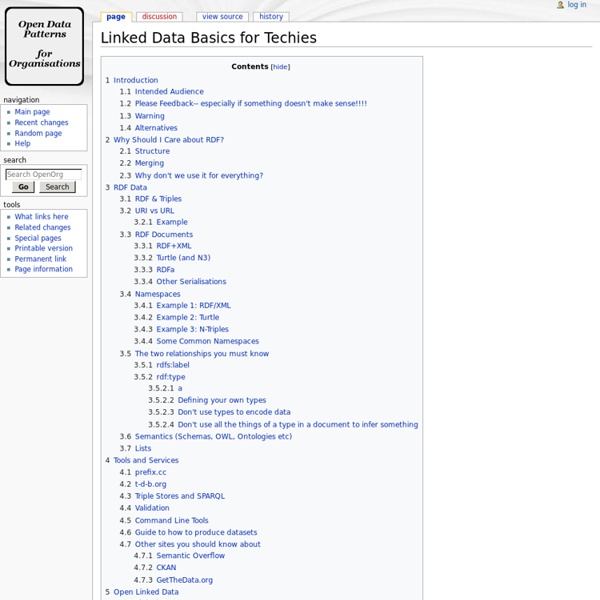



Linked Data: Evolving the Web into a Global Data Space sameAs Linked Data Platform 1.0 5.1 Introduction This section is non-normative. Many HTTP applications and sites have organizing concepts that partition the overall space of resources into smaller containers. Blog posts are grouped into blogs, wiki pages are grouped into wikis, and products are grouped into catalogs. Each resource created in the application or site is created within an instance of one of these container-like entities, and users can list the existing artifacts within one. Containers answer some basic questions, which are: To which URLs can I POST to create new resources? This document defines the representation and behavior of containers that address these issues. This document includes a set of guidelines for creating new resources and adding them to the list of resources linked to a container. The following illustrates a very simple container with only three members and some information about the container (the fact that it is a container and a brief title): Example 1 Example 2 Example 3 Example 4 Example 5
Data What is Linked Data? The Semantic Web is a Web of Data — of dates and titles and part numbers and chemical properties and any other data one might conceive of. The collection of Semantic Web technologies (RDF, OWL, SKOS, SPARQL, etc.) provides an environment where application can query that data, draw inferences using vocabularies, etc. However, to make the Web of Data a reality, it is important to have the huge amount of data on the Web available in a standard format, reachable and manageable by Semantic Web tools. To achieve and create Linked Data, technologies should be available for a common format (RDF), to make either conversion or on-the-fly access to existing databases (relational, XML, HTML, etc). What is Linked Data Used For? Linked Data lies at the heart of what Semantic Web is all about: large scale integration of, and reasoning on, data on the Web. Examples Learn More Tim Berners-Lee's note on Linked Data gives a succinct description of the Linked Data principles.
Getty Vocabularies as LOD The Getty vocabularies are constructed to allow their use in linked data. A project to publish AAT, TGN, ULAN, and CONA to the LOD (Linked Open Data) cloud is underway. The documents on this page contain news and presentations about releasing the Getty vocabularies as LOD. News and Status of the Project Ontology update: Note that the ontology has changed. Additional releases: Plans are in place to release the other vocabularies as LOD on the following dates: ULAN in January 2015 and the CONA demo in July 2015. Other formats: In addition to LOD, we plan to continue providing the data in relational tables and XML releases. Working with the community: We have established an open community and we welcome collaboration. For questions and comments about editorial content or general information regarding the Getty Vocabularies, please contact us at vocab@getty.edu The semantic links to the AAT and TGN subjects are now live. What Is LOD?
Basic Semantic Concepts | Semantic Strategy Inc What is an Ontology? An ontology formally represents knowledge as a set of concepts within a domain, and the relationships among those concepts. The World Wide Web Consortium (W3C) uses the word vocabulary, but they can essentially mean the same thing: Vocabularies define the concepts and relationships (also referred to as “terms”) used to describe and represent an area of concern. Vocabularies are used to classify the terms that can be used in a particular application, characterize possible relationships, and define possible constraints on using those terms. What is a Triple? A triple is a data entity composed of subject-predicate-object, like “Bob is a Person” or “Bob knows Fred”. Examples of triples: Ted Derek Alexandria has employee has supervisor has title has child population President Jimmy What is a Triple Store/Quad Store? A Triple Store is a database designed for the storage and retrieval of Resource Description Framework (RDF) metadata in the form of triples. What is Semantic Provenance?
RDF 1.1 N-Quads Abstract N-Quads is a line-based, plain text format for encoding an RDF dataset. Status of This Document This section describes the status of this document at the time of its publication. Other documents may supersede this document. This document is part of the RDF 1.1 document suit. This document was published by the RDF Working Group as a Recommendation. Please see the Working Group's implementation report. This document has been reviewed by W3C Members, by software developers, and by other W3C groups and interested parties, and is endorsed by the Director as a W3C Recommendation. This document was produced by a group operating under the 5 February 2004 W3C Patent Policy. Table of Contents 1. This document defines N-Quads, an easy to parse, line-based, concrete syntax for RDF Datasets [RDF11-CONCEPTS]. N-quads statements are a sequence of RDF terms representing the subject, predicate, object and graph label of an RDF Triple and the graph it is part of in a dataset. 2. 2.1 Simple Statements
rdf - N-Quad graphs - how do I use them?